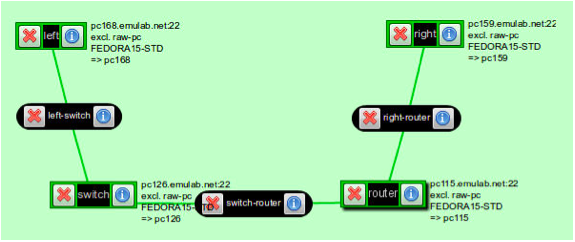Overview:
In this experiment you will learn how to set up a firewall using OpenFlow. We will use the following network topology for this experiment:
Overview:In this experiment you will learn how to set up a firewall using OpenFlow. We will use the following network topology for this experiment:
|
|
Prerequisites:This tutorial expects that you have completed lab 0 and know how to create a new sliver with an existing rspec. If you have not completed lab 0 please do so now. |
Tools:All tools will already be installed at your nodes. This experiment uses OpenFlow and Open vSwitch. |
|
Where to get help:For any questions or problem with the tutorial ask your TA or Professor for help. If a GENI tool is not working correctly please email help@geni.net |